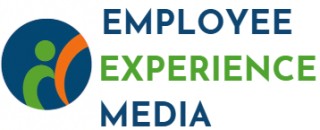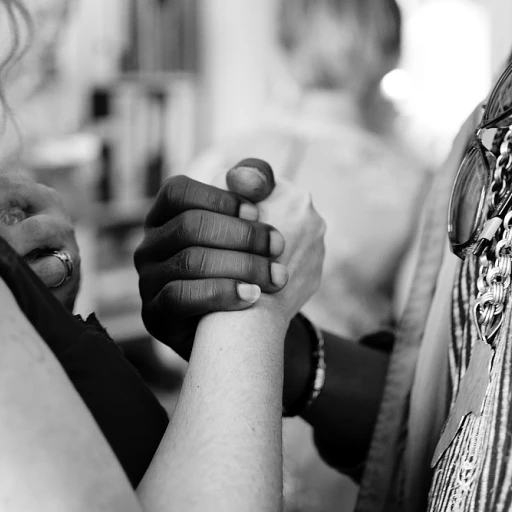
Understanding DEI Candidate Meetings
Embracing the Core Elements of DEI Candidate Meetings
Diversity, Equity, and Inclusion (DEI) candidate meetings are essential components of modern hiring practices aimed at cultivating a fair and inclusive workplace. These meetings are designed to ensure that candidates from diverse backgrounds are given equitable opportunities during the hiring process, regardless of race, color, religion, sex, or national origin, aligning with Title VII of the Civil Rights Act. The importance of these meetings in creating a culturally rich and diverse workforce cannot be underestimated. Key goals of DEI candidate meetings include:- Promoting Diversity and Inclusion: DEI meetings aim to encourage diversity in the workplace by actively seeking candidates from varied backgrounds. This helps in combating discrimination and fostering a sense of belonging within the company. The presence of an inclusive environment leads to more innovative ideas and better business outcomes.
- Enhancing Equity in Hiring: By standardizing the hiring processes, DEI meetings strive to provide equal employment opportunities, removing barriers for underrepresented groups. They work towards parity in the workplace, ensuring that all candidates are assessed based on their skills and qualifications.
- Identifying Unconscious Biases: Training programs within DEI initiatives focus on recognizing and overcoming implicit biases that may affect hiring decisions. These biases often inadvertently creep into interviews and evaluations, making it crucial for companies to address them proactively through DEI training.
- Aligning with Legal Frameworks: Companies must adhere to policies such as the Equal Employment Opportunity Commission guidelines and comply with executive orders related to affirmative action. Doing so not only ensures legal compliance but also strengthens an organization's DEI efforts.
Challenges in Conducting DEI Candidate Meetings
Addressing Obstacles in the DEI Journey
Conducting DEI candidate meetings comes with a unique set of challenges that organizations must be prepared to navigate. These challenges can impact the overall effectiveness of the DEI initiatives and require focused efforts to overcome. One notable challenge is ensuring that the process is free of unconscious bias. Despite the best intentions, hiring managers may unconsciously allow preconceived notions about race, national origin, gender, or other factors related to race or religion to influence their decisions. To combat this, diversity training and inclusion workshops can be instrumental in helping employees become more aware of their biases and address them head-on. Another common obstacle is the lack of standardized procedures to ensure equity during the hiring process. Without clear protocols, candidates of diverse backgrounds might not receive equal employment opportunities, potentially leading to discrimination claims. Implementing structured DEI programs and adhering to Title VII and executive orders related to affirmative action are critical steps toward standardization. Communication barriers also pose significant challenges in DEI meetings. Diverse work environments can sometimes lead to misunderstandings or misinterpretations. Providing employees with communication training and tools to interact effectively in diverse and inclusive workplaces is crucial. Moreover, companies often struggle with measuring the success of their DEI initiatives. Without clear success metrics, it is challenging to assess whether the meetings and subsequent hiring processes are effectively promoting diversity inclusion and equity inclusion. Establishing clear goals and metrics for diversity equity efforts ensures transparency and accountability. For organizations aiming to maintain a diverse workplace, it's paramount to continuously improve DEI efforts by learning from these challenges. Integrating strategies to work with diverse and inclusive teams effectively can greatly enhance the overall employee experience. For an in-depth exploration, see working together in a diverse and inclusive team environment. Successfully overcoming these obstacles in DEI candidate meetings not only benefits the individual candidates but also strengthens the company's commitment to building a supportive, inclusive, and equitable business environment.Best Practices for DEI Candidate Meetings
Adopting Best Practices for DEI Candidate Meetings
Integrating diversity, equity, and inclusion (DEI) best practices into candidate meetings is pivotal for fostering a truly inclusive workplace. Organizations, irrespective of their sector, must make their hiring process reflect the diverse nature of the modern workforce. Here are several strategies to elevate DEI efforts during candidate meetings.- Create an Inclusive Environment: Setting up a candidate meeting environment that reflects your DEI initiatives is crucial. This involves ensuring accessibility for all candidates, including those with disabilities, and providing materials in multiple languages to accommodate different national origins.
- Implement Structured Interviews: Structured interviews help mitigate unconscious bias, ensuring every candidate is evaluated on an equitable basis. Provide DEI training for interviewers to handle diversity discussions sensitively and educate them about the legal implications related to Title VII of the Civil Rights Act.
- Offer Transparency on Hiring Practices: Be clear about your organization's DEI programs and affirmative action policies. This transparency builds trust and assures candidates that equity and inclusion are priorities within your business framework.
- Encourage Diverse Perspectives: Including team members from varied backgrounds, be it race, religion, or sex, in interview panels fosters a well-rounded evaluation process, reflecting the company’s commitment to inclusive employment.
- Utilize Technology Thoughtfully: Employ technology to remove bias. Tools that anonymize applicant data (such as race or gender) can help ensure a fair assessment based solely on qualifications and capabilities.
Role of Leadership in DEI Candidate Meetings
Leaders as DEI Advocates
The role of leadership in strengthening diversity, equity, and inclusion (DEI) initiatives is crucial. Leaders set the tone for the company's values and play a decisive role in fostering an inclusive workplace. They can influence policies and practices that help to eliminate discrimination based on race, color, religion, sex, or national origin, in alignment with Title VII and other regulatory frameworks.
Promoting Inclusive Practices
Leadership must actively promote and support diverse hiring practices by integrating DEI into the hiring process. They should advocate for affirmative action and ensure that diversity equity and inclusion are central to employment opportunities. Whether it's collaborating on DEI programs or attending diversity training sessions, leaders can cultivate an inclusive environment by leading by example.
Creating a Culture of Equity
Effective leadership in DEI means championing equity inclusion in every aspect of the business. This involves being proactive in addressing systemic issues of race and inclusivity in the workplace. Leaders must foster a company culture that values diverse perspectives and cultivates a sense of belonging for all employees.
Providing Resources and Support
To enhance DEI efforts, leaders need to allocate adequate resources for training and development programs. These initiatives are essential to ingraining inclusive practices into the company's ethos. Leaders should encourage participation in diversity training and inclusivity workshops, thus equipping employees to navigate diverse work environments successfully.
Evaluating Leadership Impact
It's also critical for leaders to assess the impact of their DEI efforts. Through continuous evaluation and measurement of DEI initiatives, leaders can identify areas for improvement and ensure the longevity of DEI programs. By establishing clear metrics for success, leaders can reinforce their commitment to diversity and inclusion in the workplace.
Measuring Success in DEI Candidate Meetings
Assessing the Impact of DEI Initiatives
When it comes to understanding the effectiveness of Diversity, Equity, and Inclusion (DEI) initiatives within candidate meetings, measuring success becomes crucial. Accurate assessment ensures that the diversity initiatives are not just box-ticking exercises but are truly fostering an inclusive environment, enhancing the hiring process to better reflect equity and representation. To effectively measure success in DEI candidate meetings, consider the following strategies:- Establish Metrics for Success: Key performance indicators (KPIs) specific to DEI goals must be established. This might include tracking the diversity of candidates considered and hired, as well as assessing inclusive language use during meetings.
- Feedback Mechanisms: Gathering feedback from both candidates and employees involved in the hiring process can provide valuable insights into the efficacy of DEI training and programs implemented.
- Employee Demographics: Monitoring changes in the demographics of the workplace post-recruitment can be telling indicators of success in diversity and inclusion efforts. Reviewing categories such as race, national origin, and gender offers a broader understanding of the recruitment process efficacy in promoting equity.
- Review Retention Rates: Evaluate whether diverse hires are staying with the company long-term. High turnover rates among certain demographic groups might indicate underlying issues in the perceived inclusivity within the company culture.
- Conduct Regular Assessments: Periodic evaluations of DEI efforts ensure that established goals align with broader company objectives regarding diversity inclusion.
Future Trends in DEI Candidate Meetings
Evolving DEI Candidate Meetings in the Modern Workplace
As we look towards the future of DEI candidate meetings, several trends are emerging that promise to reshape how companies enhance diversity, equity, and inclusion in their hiring processes.- Data-Driven Approaches: Many organizations are leveraging data to drive their DEI initiatives. By analyzing metrics around diversity and inclusion, businesses can identify areas of improvement and track progress over time. This data-driven mindset helps reduce discrimination and promotes equity.
- Advanced Technology Integration: With the rise of AI and machine learning, DEI candidate meetings are becoming more streamlined and efficient. These technologies can help eliminate biases during the hiring process, ensuring that candidates are evaluated fairly regardless of race, national origin, or other personal attributes.
- Continual DEI Training: To ensure the effectiveness of DEI efforts, regular training sessions for employees are becoming indispensable. These programs not only educate on Title VII and affirmative action but also help foster an inclusive company culture that values diverse perspectives.
- Enhanced Leadership Role: Leadership's influence continues to grow as executive orders and corporate policies increasingly prioritize DEI initiatives. By championing equality and advocating for inclusive employment opportunities, leaders set a powerful example that permeates throughout the workplace.
- Collaborative and Inclusive Hiring Processes: Embracing collaborative approaches among various departments promotes a culture of inclusivity and helps build diverse teams. Inclusivity in the employment opportunity process ensures a fair chance for all candidates.













